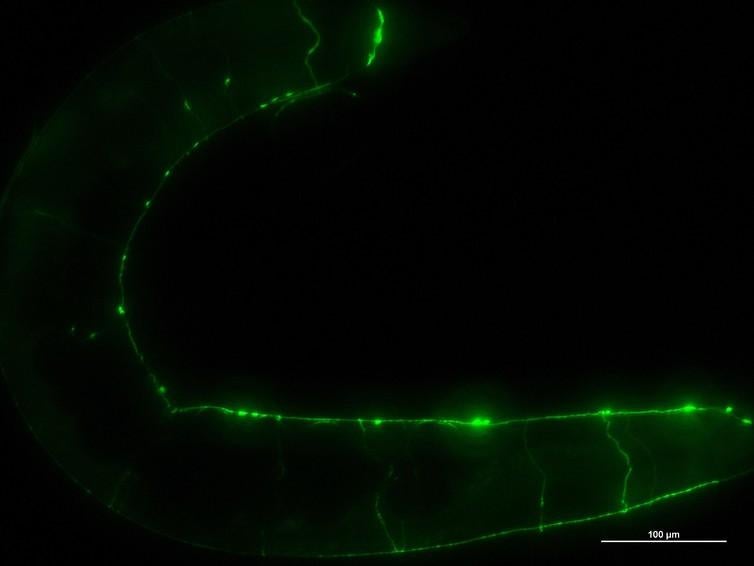Could fish help find a treatment for drug-resistant epilepsy?
Research on rodents has provided many of the epilepsy treatments that are used today, but these don’t work for everyone

Your support helps us to tell the story
From reproductive rights to climate change to Big Tech, The Independent is on the ground when the story is developing. Whether it's investigating the financials of Elon Musk's pro-Trump PAC or producing our latest documentary, 'The A Word', which shines a light on the American women fighting for reproductive rights, we know how important it is to parse out the facts from the messaging.
At such a critical moment in US history, we need reporters on the ground. Your donation allows us to keep sending journalists to speak to both sides of the story.
The Independent is trusted by Americans across the entire political spectrum. And unlike many other quality news outlets, we choose not to lock Americans out of our reporting and analysis with paywalls. We believe quality journalism should be available to everyone, paid for by those who can afford it.
Your support makes all the difference.Epilepsy is the most common neurological disorder in the UK – about 600,000 people have the condition. Unfortunately, for a third of those people, there are no effective treatments. But fish and worms might be about to change that.
Fish and worm “models” of epilepsy are giving scientists fresh insights into the condition – insights that may eventually lead to drugs being developed to treat the one-third who’ve been left out in the cold.
Until recently, scientists didn’t know much about the causes of epilepsy. This has led to a large proportion of research being conducted using chemically induced seizures in rodents. Many drugs that can reduce seizures in these models have become the epilepsy treatments that are prescribed today. But although this has led to effective drugs being developed for most people with epilepsy, it has provided no options for refractory (drug-resistant) epilepsy.
Since 1995 and the discovery of the first DNA mutation seen to cause epilepsy, research into other mutations that result in the disorder has greatly expanded our pool of knowledge. New DNA manipulation techniques allow us to take these faulty genes and implant them in other animals. This can be used to create epilepsy models for the types of epilepsy that aren’t currently treatable; the animal models that can then be used to test new drugs to treat the disorder.
Rodents may seem like an obvious choice for this line of research, but they are expensive, can be technically tricky, and there are a large number of ethical issues to consider when using mammals in science. A lot of these issues can be solved by turning to simple organisms such as roundworm and zebrafish.

Both of these animal models are well understood by scientists. The position of every cell in a roundworm is known and has been mapped. Although simple, they have a large set of measurable movements and, because of their transparency, fluorescent proteins allow us to visualise almost every cell type. They also produce a vast number of offspring, which, when all combined, creates a powerful testing tool.
Many genes involved in human diseases are conserved between humans, roundworms and zebrafish. In fact, 40 per cent of roundworm genes and 84 per cent of zebrafish genes have a similar function to their human counterparts.
Using DNA manipulation techniques, such as CRISPR-Cas9, where an enzyme can be guided to remove and replace specific regions of DNA, similar mutations can be created to mimic faulty human genes. Genes from one of these models can even be replaced with the human gene. We can then study the effects on the behaviour and health of the animal to get a better understanding of the disruptions made through the mutations.
Rather than dealing with the complex nervous system in a mammal, this approach means you can deal with a simpler system while still maintaining the complexity of using a whole organism. If you think of a heavily crowded room where someone is being extremely noisy, you may be able to hear that someone is being loud but still unable to see them or hear what they are saying. This would be easier in a less crowded room.
Research with simple organisms is the same: it’s easier to find how the mutations interfere with the animal’s normal functioning without the background noise. This has already given insights into previously difficult to characterise epilepsy syndromes such as lissencephaly, whereby a brain malformation causes seizures (lissencephaly means “smooth brain”). At the University of Alabama, researchers created DNA mutations in roundworms similar to those in lissencephaly. This helped the scientists to discover that seizures in this disorder were linked to disrupted neuronal transport.
It is difficult to make a direct comparison between these simple organisms and humans, but by rapidly providing a large amount of functional information, before progressing to tests in animals, simple creatures – like worms and fish – could reduce the cost of animal research. So using these models as a frontline screening tool may save time, money and effort in drug development.
With a new abundance of genetic information coupled with powerful gene editing tools, expect to see some more unusual models in future research. The ability to integrate epilepsy mutations from humans into these models will begin to change the way drug testing is done. And, hopefully, the one-third of people with refractory epilepsy will eventually get the treatments they so badly need.
PhD student at University of Liverpool. This article first appeared on The Conversation (theconversation.com)
Join our commenting forum
Join thought-provoking conversations, follow other Independent readers and see their replies
Comments